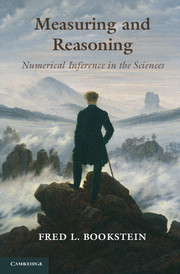Book contents
8 - Retrospect and Prospect
from Part IV - What Is to Be Done?
Published online by Cambridge University Press: 05 March 2014
Summary
This last chapter summarizes the implications of all that has preceded for the praxis of statistical science in the near future. It is divided into three sections. Section 8.1 introduces one final example: another study of fetal alcohol exposure, this time based on ultrasound brain images of infants. With its aid I review the notions of abduction and consilience from a point of view emphasizing the psychosocial structures of science rather than the logic of these forms of inference per se. If a scientific fact is “a socially imposed constraint on speculative thought” (Ludwik Fleck's main theme), then abduction and consilience work in somewhat contrasting ways to effect that constraint depending on whether the scientific context is one of simple measurement or the probing of a complex system. Section 8.2 shows how all these procedures depend on prior consensus as to what constitutes agreement or disagreement between a numerical representation of some pattern and an expectation about a scientific regularity. In the final section I step back to examine the whole protocol by which forms of numerical reasoning are communicated across the academic and technological generations. The chapter concludes with some recommendations for major changes in the way we teach statistics. If this praxis of abduction cum consilience toward the understanding of complex systems is to keep up with the requirements for science and for the public understanding of science over the next few decades, special attention must be paid to the curricula by which all these strategies are taught to the next generation of our colleagues.
- Type
- Chapter
- Information
- Measuring and ReasoningNumerical Inference in the Sciences, pp. 481 - 500Publisher: Cambridge University PressPrint publication year: 2014



